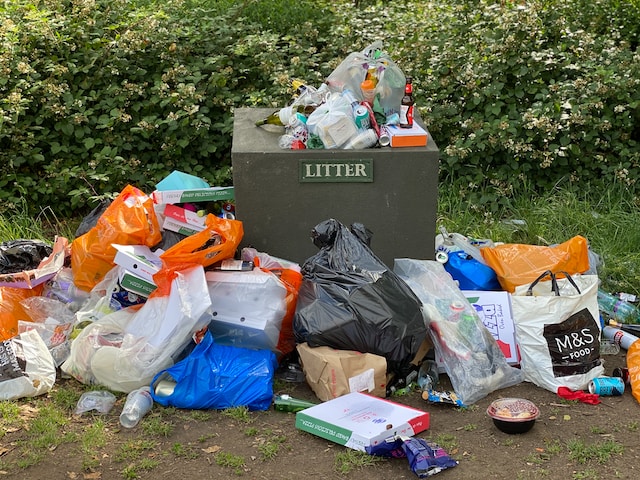Pest Control Digital Marketing involves various strategies that help your business connect with your target audience online. These can include social media marketing, paid advertising, and SEO.
Strategically marketing your pest control services online can help you increase visibility, generate cost-effective leads, and build brand awareness. Our marketing experts have the knowledge and experience to get you started.

Digital marketing for pest control services is necessary in an era when Google searches often precede purchase decisions. However, digital marketing tools’ ease of access and affordability have led to overcrowded platforms and fierce competition for audience attention and market share.
To stand out in the vast digital savannah, your pest control business needs a unique strategy tailored to your industry. We’ve explored strategies from SEO to email marketing designed to elevate your visibility and connect with customers like never before.
The heart of any effective digital marketing strategy is a well-designed and optimized website. Your business’s website should be intuitive and informative for users, offer easy online booking, feature prominently displayed positive reviews, and be optimized for mobile devices.
Social media offers another powerful avenue for promoting your pest control business. By utilizing ad campaigns with granular targeting options based on user demographics and interests, you can deliver targeted ads right to your target audience’s feeds. Social media ads can highlight your unique promotions, customer success stories, and distinct advantages over competitors, all of which work together to drive new leads and conversions for your pest control business.
An often-overlooked aspect of web design is the speed at which your site loads on different devices. Today’s consumers want fast and reliable websites, and they will quickly move on to a competitor if your website isn’t up to par. Make sure your website is responsive and designed to load fast on desktop, tablet, and smartphone devices.
Content Marketing
Content marketing is a form of online advertising that involves creating and distributing valuable information to proactively attract potential customers for your pest control business. It can include everything from blog posts and videos to infographics and email newsletters. The type of content you create should be closely related to your products and services in order to maximize engagement and trust with consumers. For example, long-form blogs that provide answers to common pest problems can help your company show up in search results and become a trusted resource for potential customers.
Another way to leverage content marketing is through social media. Social media platforms like Facebook and Instagram can be used to reach a large audience with less investment than traditional advertising methods. However, it’s important to remember that not every platform is right for every business. A good pest control digital marketing agency will perform research to identify which platforms are most effective for your brand and develop a content strategy that aligns with your goals.
Digital marketing also includes leveraging SEO to boost your visibility and organic traffic. This can be achieved through the use of targeted keywords and optimizing your website for user experience. Unlike traditional marketing, digital marketing campaigns can be adjusted and optimized in real-time based on performance data.
As more and more people turn to the internet for information, it’s vital that your pest control business is visible, trustworthy, and easy to find online. Strategic digital marketing can level the playing field with your local competition and generate more sales leads for your business. Contact a leading pest control digital marketing agency to learn more about how they can help you grow your business.
Social Media Marketing
We know how the digital world works, and we use those insights to develop marketing strategies tailored to your pest control business. From social media to SEO and everything in between, we’ll help you navigate the complexity of this ever-changing landscape and get you seen by the customers who are most likely to choose your services.
As a general rule of thumb, don’t bombard your followers with too much promotional content. Most people don’t want to see a feed full of your latest special offer or your new logo. Instead, focus on sharing useful information that will improve your followers’ lives and demonstrate your expertise. This could include information about the risks of pest infestation or tips on how to avoid them, and it should be tailored to your local area.
Social media also gives you the opportunity to share testimonials and five-star reviews from satisfied pest control customers. This form of social proof is one of the most effective ways to build trust with potential clients and convince them to give you a try.
Video is an especially powerful tool in the social media realm. In fact, 85% of consumers say that they want to see videos from the brands they follow on social media. Creating short videos that highlight your service offerings and showcase your team’s work can be a great way to attract new leads.
If you don’t have the time or resources to keep up with social media yourself, consider working with a social media management agency that can handle your social media marketing and provide you with the best results. We have the skills and experience to create and manage your social media presence so that you can focus on running your pest control company.
Paid Advertising
Digital marketing offers a variety of avenues for pest control companies to engage and interact with consumers. From social media platforms to email campaigns, digital marketing tools allow pest control services to build trust and loyalty with consumers while providing robust analytics that help evaluate campaign performance.
A robust SEO strategy is a key component of a successful pest control digital marketing plan. SEO strategies, like creating relevant content and establishing an authoritative online presence, can boost search engine rankings, drive traffic to your website, and increase overall brand visibility.
PPC advertising is a great way to target high-intent customers actively searching for pest control solutions in your service area. Expertly managed ad campaigns can provide immediate visibility and growth for your business while providing a clear return on investment.
Digital marketing has proven to be one of the most effective ways to connect with new and existing homeowners. By using strategies like SEO, PPC, social media, and content marketing, you can develop an effective strategy that increases your online visibility, builds trust, and drives targeted traffic to your pest control business.
A robust social media marketing strategy is a must for any pest control business. It is a powerful tool that allows you to share helpful tips and testimonials with your audience, as well as advertise your services in your local service area. Our team of social media experts can help you create and manage a social media campaign that will reach and engage your target audience. Having an active email drip campaign is also crucial for any pest control company. It keeps your business top of mind for previous customers and helps you drive traffic to your website through timely email blasts.
Google My Business
Digital marketing is an umbrella term for a variety of online strategies and tactics that can help pest control companies reach and connect with their target audience. These strategies range from SEO and content marketing to social media advertising and influencer collaborations. By leveraging these platforms, pest control companies can grow their online visibility, generate cost-effective leads, and build brand loyalty.
While digital marketing offers a number of advantages, it can be challenging for pest control companies to navigate privacy concerns, ad blindness, information overload, and technical challenges. Nonetheless, with proper planning and execution, digital marketing can be an effective strategy for growing your business and connecting with customers.
One of the most important aspects of digital marketing is local SEO, which involves optimizing your website and content for search terms that are relevant to your audience. This can help you appear in local search results and attract new clients.
Another aspect of digital marketing is paid advertising, which can help you reach potential customers at the right time and place. Through platforms like Google Ads, you can target ads to people who are searching for services like yours. This can be an effective way to drive traffic to your website and increase conversions.
To make the most of your paid advertising efforts, developing a well-defined buyer persona and creating targeted landing pages is important. These landing pages should include high-quality, relevant content that speaks to the needs of your audience, such as a list of your services, a call to action, and testimonials or reviews. Additionally, you should ensure that your website is optimized for local SEO by including your address, phone number, and website URL in your title tag, as well as using location-specific keywords throughout your site content and meta tags.





